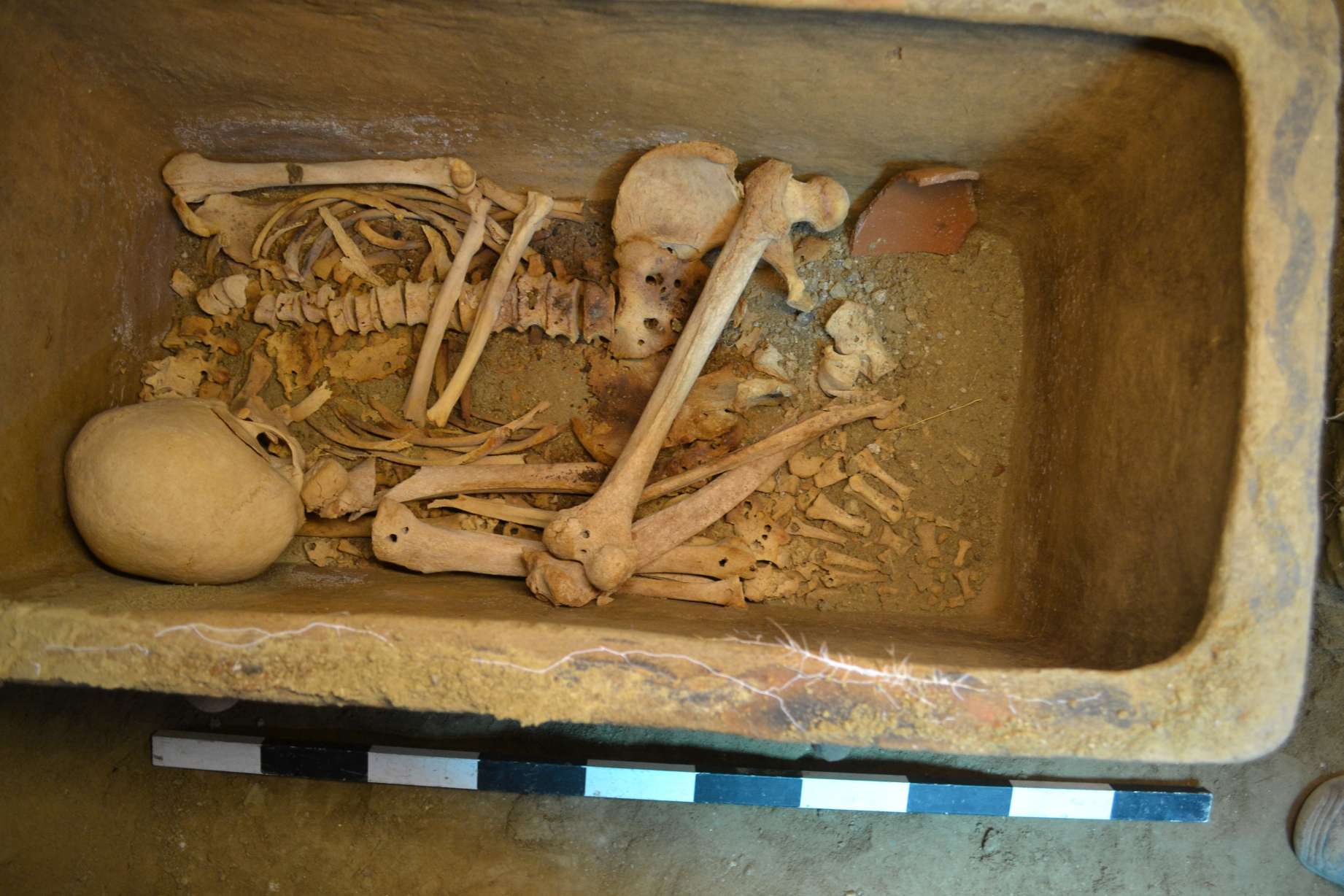In the era between 1,400 and 1,200 BC, two Minoan men were interred in a chamber that had been carved out of the soft limestone of southeast Crete. The deceased were put in larnakes – clay coffins that were a popular choice for Minoan society in the Bronze Age – and placed among a variety of hued funerary vases, a sign of their privileged standing. After the tomb was sealed with stone masonry, it was forgotten for almost 3,400 years, leaving the two unbothered.

In summer 2018, a farmer in a village in Crete, Greece caused an interruption in a millennia-long slumber when he was trying to park his car in a shaded olive grove on his land, as reported by George Dvorsky on Gizmodo. After being unable to park his vehicle, the man noticed a four-foot-wide hole that had appeared where he was just standing. Upon approaching the hole, the farmer was astonished to find that he had discovered “a wonderful thing.”
According to a statement, archaeologists from the local heritage ministry, Lassithi Ephorate of Antiquities, conducted excavations in a farmer’s olive grove near Rousses, a small village near Kentri in Ierapetra, Crete. In the approximately four-foot by eight-foot deep pit, they discovered a Minoan tomb in an extremely well-preserved condition. Inside the tomb were three niches connected by a vertical trench.
In the northernmost area, researchers discovered a coffin and a number of vases spread out on the floor. At the southernmost niche, they uncovered a second sealed coffin, plus 14 Greek jars termed amphorae and a bowl.
According to Forbes’ Kristina Kilgrove, the presence of high-quality pottery in the Bronze Age chamber tomb on Crete reveals that the buried individuals were likely of some affluence. However, other burials from the same Late Minoan era feature far more ornate beehive-style tombs. “These [men] could be wealthy,” Kilgrove states, “but not the wealthiest.”

Argyris Pantazis, the deputy mayor of local communities, agrarian, and tourism of Ierapetra, informed Cretapost that the Kentri grave had never been discovered by robbers. In reality, 8 have remained concealed forever if not for an accident with a broken irrigation pipe. This pipe caused the land around the farmer’s olive grove to be watered down, eventually leading to his unanticipated parking mishap.
“We are particularly pleased with this great archaeological discovery, as it is expected to further enhance our culture and history,” Pantazis added in his interview with Cretapost. “Indeed, this is also a response to all those who doubt that there were Minoans in Ierapetra.”
In 2012, an excavation at Anatoli in Ierapetra unearthed a Minoan villa estimated to have been constructed between 1,600 and 1,400 BC. This find is noteworthy because, according to Archaeology News Network, the majority of Minoan settlements found on Crete have historically been in the lowlands and plains, not the mountainous regions of Ierapetra. The Kentri tomb is from a similar period.
This latest discovery provides additional substantiation of the Minoan civilization’s existence – as Mark Cartwright explains for the Ancient History Encyclopedia, the Minoans are best known for the elaborate palace complexes they constructed, which likely influenced the classic Greek myth of Theseus and the Minotaur.
According to the legend, Queen Pasiphae of Crete gave birth to the Minotaur, a creature that was half-man, half-bull, after being smitten with a bull sent to Earth by the Greek god Zeus. This Minotaur was doomed to forever wander the passageways of an underground labyrinth and slay everybody it encountered, until finally being vanquished by the demigod Theseus, who used a special ball of thread, lent to him by King Minos’ daughter, Ariadne, to escape the maze.
The fate of the Minoans has been hard to uncover. However, Forbes’ Kilgrove states that catastrophes including the eruption of the Thera volcano, an earthquake, and a tsunami played a role in their collapse, making it simple for adversaries like the Mycenaeans to invade. Examining the Kentri tomb, that was unearthed, may potentially provide more information on the Minoan-Mycenaean rivalry and also the termination of the Cretan civilization.




